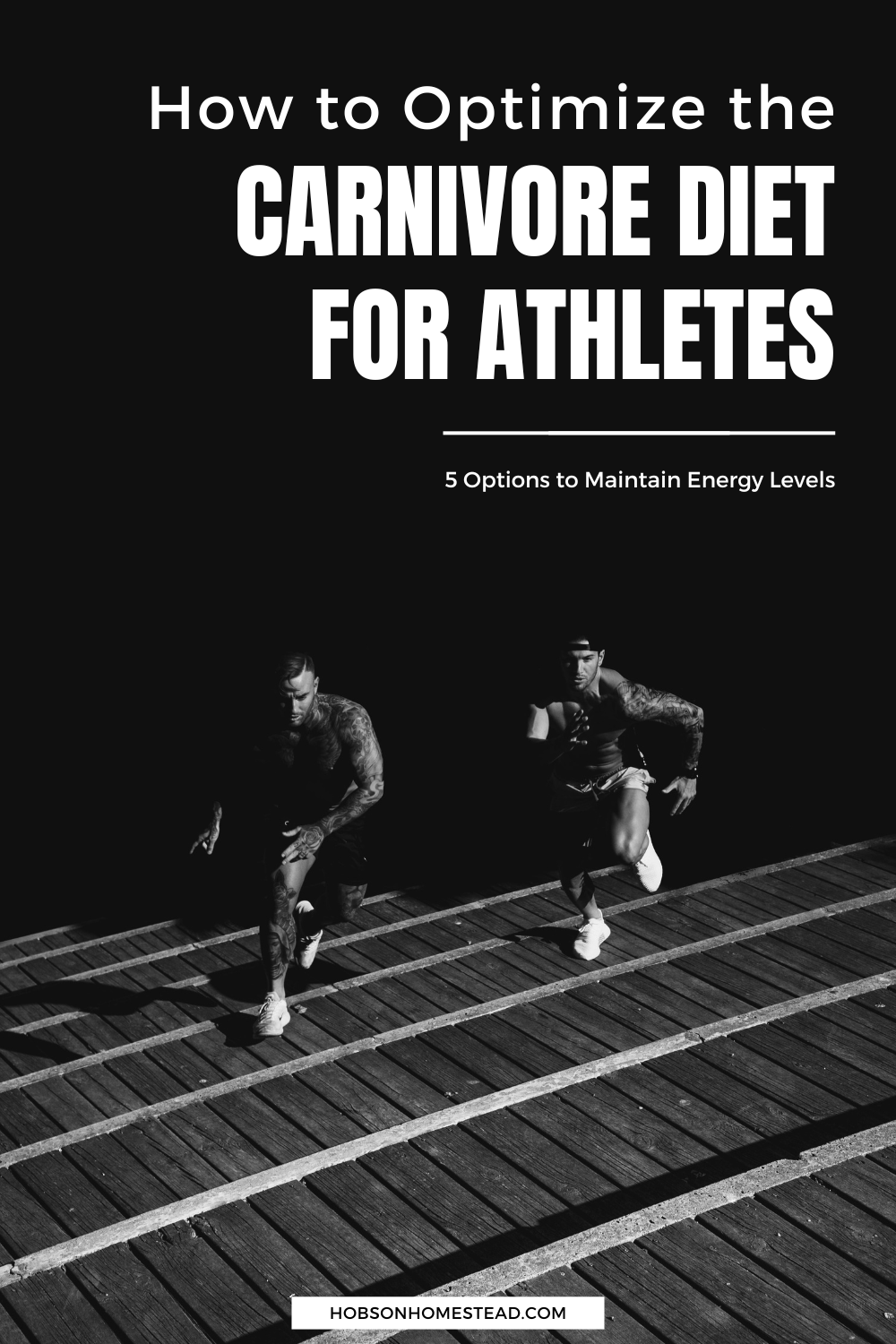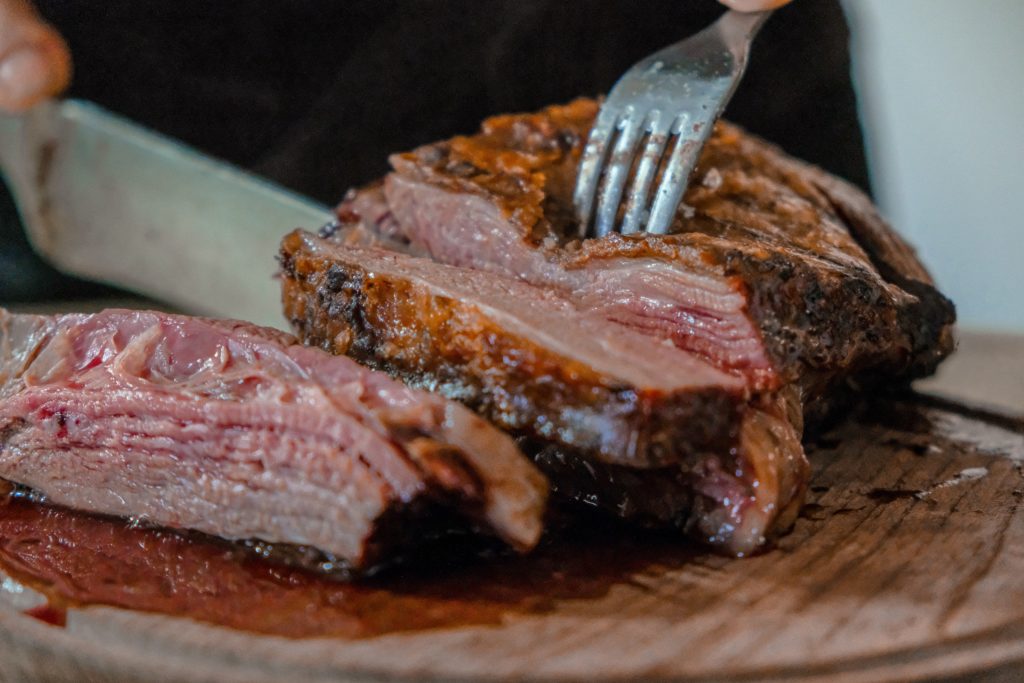Here are 5 slight variations of the Carnivore Diet for athletes that honor the foundations of animal-based eating while maintaining energy for training.
The Carnivore Diet may be the optimal human diet for low body fat, minimal inflammation, and disease prevention. Still, one of the drawbacks of an animal-based diet is the lack of energy for athletes.
After a few weeks on an animal-based diet, athletes often report feeling sluggish during training sessions due to wallowing in ketosis. The low-hanging fruit (pun intended) is to increase fruit intake, but adding fructose is NOT the best way to overcome fatigue. Likewise, adding honey to your diet also adds limited benefits and doesn’t tend to supply enough energy for workouts or sports.

But first, let’s talk about the standard acceptable food for Carnivore or an animal-based diet: All meats are beneficial, with red meat being the top choice due to essential nutrients, fatty makeup and satiation level. Eggs, pork, venison and other ruminants, chicken, turkey, and fish are also encouraged. And of course, all organ meats, such as heart and liver for the vitamins, should be your staples in any variation of the Carnivore Diet you choose.
Though many people who choose to start the Carnivore Diet do so to alleviate or solve a myriad of chronic health issues (weight loss, autoimmune diseases, intestinal problems, arthritis, food allergies, eczema, fertility issues, etc.), many athletes who opt for an animal-based diet are looking to increase performance instead of relieve issues.
Given an athlete’s health level coming into the Carnivore Diet and his or her increased physicality during the diet, not all will find they thrive on a diet of high protein and fat without carbs. Of course, it’s always best to try strict Carnivore first with your workout routine to see how your body adapts.
But if you find that your energy is squashed and you can’t train at the level you did before starting the Carnivore Diet, consider one of these slight variations of the diet that are specifically designed to optimize athletic performance.

Whether you’re an athlete focused on high-intensity, CrossFit-style workouts, powerlifting, sports such as basketball or football, or endurance running, these Carnivore Diet variations honor the foundations of animal-based eating while adding the least amount of changes to improve energy.
Meat + White Rice
If you’re in-season for basketball, volleyball, tennis, football, or baseball and training 4-6 days a week, you’ll want starchy carbs for fuel in addition to copious amounts of meat. The optimal amount of starchy carbs depends on your training volume, but start with a few tablespoons before and after your workout. For CrossFit athletes or powerlifters, you can change the amount of rice for training days and even eliminate it on rest days.
Why is white rice a good source of energy for athletes? Because almost no one on planet Earth has an allergy to white rice nor does white rice cause gut disruption like brown rice and other grains. Also, it’s extremely easy to digest and converts to energy almost immediately without burning off too quickly like honey.
The best way to eat the meat + rice variation is to mix the rice and meat into a “mash” along with some hard cheese and salt. Or even sprinkle in a few limited spices such as Cajun or creole, which is mostly salt. Carnivore suggests red meat so grab a large pack of 80/20 ground beef to cook in bulk and you can complete quick and easy meal prep.
Meat + Dairy
Dairy is mostly frowned upon in an animal-based diet unless it’s raw. But with the majority of the population unable to legally purchase raw milk and cheese, the benefits of dairy are still valid for athletes if you don’t struggle with digestion issues. For example, you can add cottage cheese and plain Greek yogurt to your morning snack, which will keep you full for several hours between meals. Look for high-fat cottage cheese and 10% milk fat yogurt, both of which are sold at large- and small-chain retailers for a just a few dollars.
If you want to increase your caloric intake further as an athlete, add whole milk to your diet. Yes, it’s pasteurized and homogenized, but at 2,400 calories per gallon and easy to transport back and forth to the gym or practice, milk packs a punch for recovery and added fuel for the hardcore athlete. Decades of lifters and sports trainers use milk as their go-to post-workout fuel because the results are indisputable.
Meat + Honey + Fruit
If you want to abide by the original Carnivore diet outlined by Paul Saladino and Shawn Baker, you’re supposed to eat exclusively eggs, meat, and organs. But lately, both doctors have begun to include fruit and honey for some “animal-based” carbs, which help supply energy without the drawbacks of gut disruption.
Fruit is not the best option for energy because modern fruit is mostly sugar covered in pesticides and fertilized with chemicals. Even organic fruit uses toxic chemicals that just so happen to be on the arbitrary acceptable list to qualify. Aside from the chemical sprays and fertilizers, fruit doesn’t supply energy like starchy carbs and tends to supply minimal calories, which is detrimental to any athlete burning off several hundred calories per training session.
Honey is in the same boat. It won’t supply adequate energy for the real athlete. We raise bees at our house and have an ample supply of honey, but a few minutes into a training session, that honey is gone along with your energy. Perhaps honey would be best-suited intra-workout between sets or during a timeout. But don’t depend on a couple of tablespoons of honey to get you through a 90-minute game or workout.

Carnivore Bulking Plan
You probably see where this is going. For certain athletes such as wrestlers, powerlifters, bodybuilders and CrossFit athletes, adding massive amounts of muscle can be challenging on the Carnivore Diet. Athletes report that even eating 2-3 lbs of meat each day doesn’t tend to increase strength or size as quickly as meat + carbs.
The solution is to combine all three approaches mentioned above. For example, you could add white rice, milk and honey to your daily routine. Or you could eat cottage cheese and yogurt for breakfast, eggs for snack, meat and fruit for lunch and save your whole milk for the evening post-workout before devouring a nice steak for supper.
Is this strictly animal-based or Carnivore? No. But it will prioritize protein while giving you unbelievable amounts of energy for your training. Within weeks you should see those muscles visibly growing.
Meat + Sweet Potatoes
The only other alternative for energy on Carnivore is sweet potatoes. You could add these to your mash instead of white rice or cook the potatoes in the microwave and top with grass-fed butter. Sweet potatoes taste amazing and offer great health benefits. But I’ve yet to hear any athlete train exclusively off meat and sweet potatoes, so I would only use this variation in combination with one of the more proven variations.
Carnivore Diet and Testosterone
No matter what version of the Carnivore Diet you try, there is no disputing that athletes need carbs. Don’t let anyone tell you that meat and fat will sustain you for multiple training sessions each week. Even in ketosis, your performance will decrease along with your testosterone. Monitoring your carb intake will have absolutely zero negative effects on your body fat if you can keep the level adequate for training, but not enough to raise body fat.
Perhaps the best reason to add carbs to your diet is to support testosterone levels. Keeping those test levels high enough will motivate you to compete and keep you in an anabolic state. If you question whether carbs increase testosterone levels, simply order bloodwork from a lab in ketosis and then order again after eating carbs and you’ll see the results for yourself.
For more Carnivore Diet posts, check out:
- 10 Tips for Your First Time on the Carnivore Diet
- Round-Up of the Best Strict Carnivore Diet Recipes
- Carnivore 2.0 Beats Out All Other Popular Health Diets
- How to Make the Perfect Cup of Carnivore Coffee
- Easy and Delicious Carnivore Salmon Patties
- Best Carnivore Diet Snacks and Meals on the Go
- How to Overcome Being Tired on the Carnivore Diet
- How to Make the Best Stacked Carnivore Burgers

